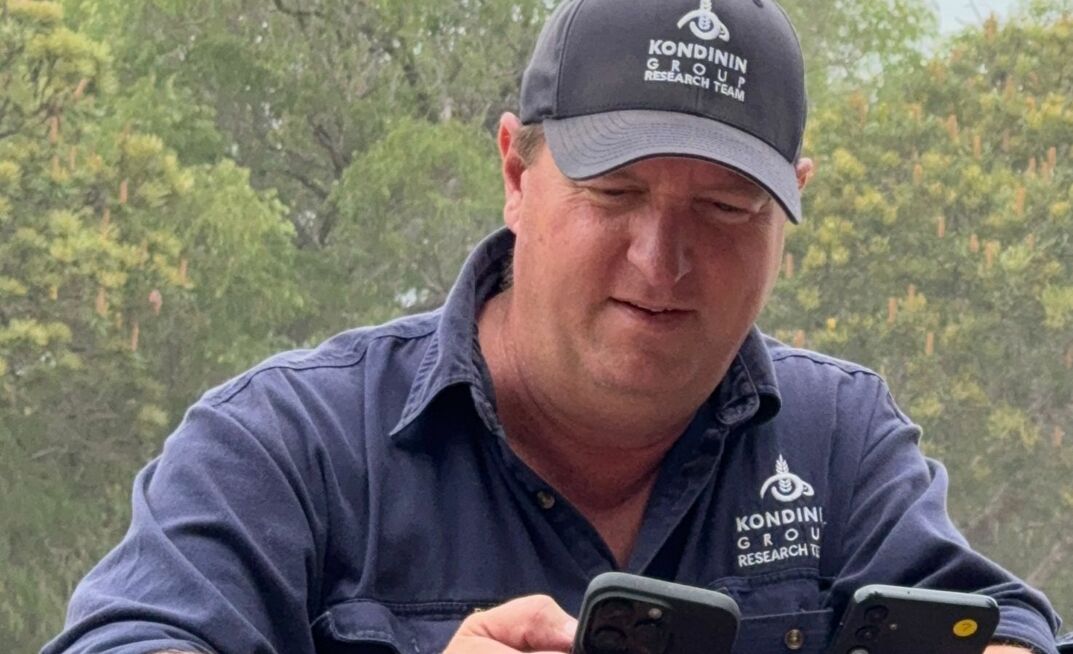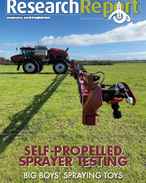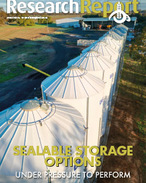POLITICAL grandstanding surrounding expanding regional telecommunication services has been labelled ‘misleading' by a respected agricultural researcher, who argues enhanced satellite services have been in the pipeline for some time.
Kondinin Group engineer, Ben White, has responded to recent political pledges to guarantee basic universal outdoor mobile coverage through the introduction of a "world-first reform." The Universal Outdoor Mobile Obligation (UOMO), announced in February, will require mobile carriers to provide access to mobile voice and SMS "almost everywhere" across Australia.
Along with Kondinin Group engineer, Josh Giumelli, White has done extensive research into regional telecommunications over many years, with the latest findings outlined in February's Research Report on Farming Ahead.
He said no political party has a right to claim credit for improved regional mobile service, pointing out Telstra and Optus outlined plans to roll out direct-to-handset satellite services long before the political statements around the UOMO. White also highlighted the commercial nature of Starlink and other satellite services, dismissing any outside credit for their development.
YOU MIGHT ALSO LIKE
In early January, Telstra unveiled a new collaboration with SpaceX's Starlink, detailing plans to roll out Satellite-to-Mobile (direct-to-handset) text messaging services to its customers and, in the longer-term, voice and low speed data services.
Similarly, in 2023 Optus shared bold plans to offer regional Australia with satellite SMS services, through a partnership with SpaceX, by the end of 2024, with voice and data expected from late this year (though this has since been delayed).
"The commercial reality is that this was going to happen anyway. And so, for any political body to stand up and grandstand about the fact that they instigated this is disingenuous. It just didn't happen that way," he said.
IS THE PROPOSED UOMO PROPOSAL PRACTICAL?
The Government was relatively vague about which mobile carriers would be required to provide mobile voice and SMS services across Australia in its UOMO statement. This raises questions about whether the reform will require all telco companies to expand mobile services, even if they do not ordinarily service regional areas.
Furthermore, given the commercial nature of the projects, the reliance on technology investment and development by global companies, and SpaceX's market share, one cannot help but wonder if the proposed plans are even practical.
White said it's likely the UOMO will only apply to the major mobile providers that have already signed up with Starlink. However, he noted SpaceX was likely to face increasing competition in the low Earth orbit (LEO) satellite space, and other telco companies in Australia were committing to expanding mobile services already.
Amazon's Project Kuiper is one example of a SpaceX competitor, while Vodafone has also partnered with SpaceX rival, AST SpaceMobile, to provide direct-to-device satellite services in other parts of the world.
In late January Vodafone claimed it made the world's first space-based mobile video call from an area without any mobile coverage on the recently launched BlueBirds satellites. It said it aims to provide ubiquitous mobile coverage for its 340 million customers in 15 countries and its network partners in 45 additional markets.
Just this week Vodafone signed an agreement with AST SpaceMobile to create a jointly owned European satellite service business, SatCo, to serve mobile network operators in all European markets. In Australia, Vodaphone claims it has recently doubled its network coverage from 400,000 to 1,000,000 square kilometres.
HOW DO THE NEW SERVICES DIFFER FROM WHAT'S CURRENTLY AVAILABLE?
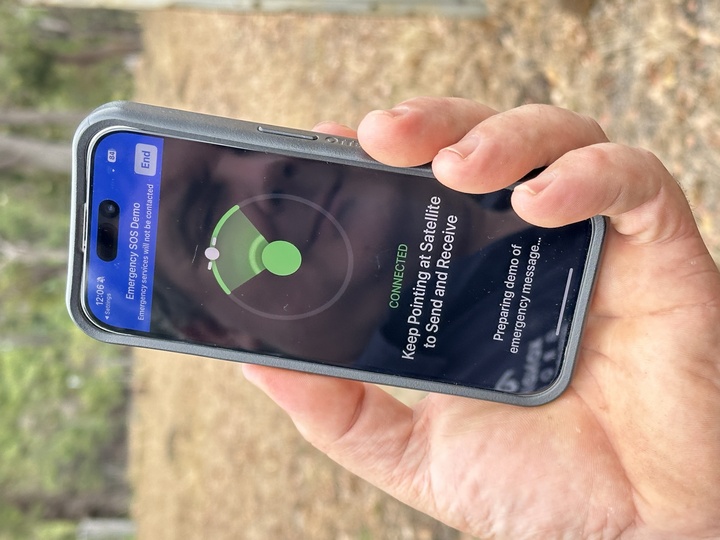
White said there is some confusion about the services that are currently available compared to emerging services.
He explains the direct-to-handset capability is available in emergency situations using an iPhone 14 or 14 Plus or later via the Globalstar network, which is a traditional satellite phone operator. Since there aren't nearly as many Globalstar satellites as there are Starlink satellites, he said phones need to be pointed towards a satellite, which wouldn't be practical for every day messages and calls.
White added some people are also currently using Starlink services to send messages and for voice calls, but to do so users need a Starlink mini kit to create a Wi-Fi network. He said it is the mini kit that connects to the low orbit satellites in space, not the handset itself. This means to send a text message or make a phone call, users must be within range of the kit and connected to its Wi-Fi network.
The key difference with the emerging service is that users will be able to connect directly to Starlink satellites from their handset or device. This means they will no longer need to be within range of the mini kit to send messages or make calls.
White noted a lot of people took advantage of a deal around Christmas time, which allowed them to buy all the Starlink hardware for $299- down from $599.
"And you'll notice that there's all these after-market Starlink antenna mounts for utes roofs and roll bars around," he said.
"But all that equipment could be superseded by direct-to-handset technology in time.
"Of course, Telstra and Optus will charge a premium for access to the Starlink service and haven't said what that will be.
"But even if it's an extra 50 dollars a month, if you do a lot of work in the bush, or even just from a safety perspective, it may be worth paying for."
WHY AREN'T DIRECT-TO-HANDSET SERVICES ALREADY AVAILABLE?
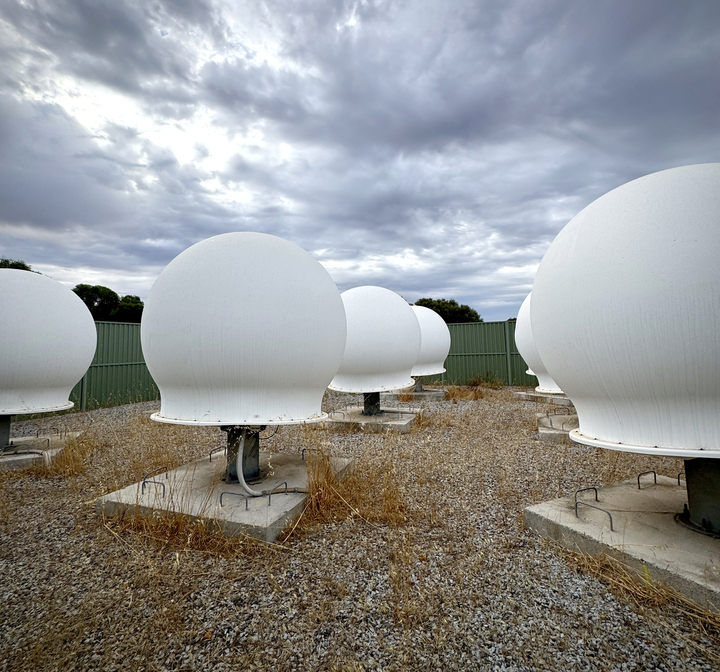
Telecommunication companies are already testing direct-to-handset services, but White said it is likely "reliability" that's holding them up. He added it's likely not all mobile services providers are set up for satellite services, and not all Starlink satellites have the capabilities either.
White highlighted the need for more Starlink ground stations into the future, noting services have already become oversubscribed in some areas of the United States.
"The ground stations provide the essential connection between the Starlink satellites and our existing communication network," he said.
"When you ring someone's home phone or business line, or to tap into the net, the satellites communicate with that infrastructure. And there will need to be more of them. If you look at the list of the ground stations in the US, it's huge."
White also emphasised the need to prioritise the service for rural users over urban users, to ensure reliable connectivity in the remote areas that need it most. However, he said the reality is mobile providers will likely offer Starlink services to all their customers, so prioritising will could be a challenge.
"It depends how they package the data. Initially it'll just be text messages, which are tiny in terms of their transmission data volume. Voice is more tricky," he said.
When it comes to data speed, White warned direct-to-handset are unlikely to offer the same speeds that are available with Wi-Fi via a Starlink kit.
"But we would envisage you'll still get reasonable bandwidth, certainly enough to get you out of trouble," he said.
ADVANTAGE OF LOW ORBIT SATELLITES
White explains while Starlink and the NBN Skymuster both offer satellite services, they are very different beasts.
"Skymuster operates as a geostationary satellite service at 36,000km above the earth's surface. Due to the altitude of operation, one of the criticisms of Skymuster is latency," he said.
"Latency is the time seemingly taken to react but is in fact the time taken for the data to travel to and from the satellite which can be 0.6 to 1.5 seconds."
He said Starlink satellites, by contrast, operate at an altitude of under 600km resulting in a latency, according to independent watchdog, the Australian Competition and Consumer Commission (ACCC), of under 0.03s in Australia.
When it comes to making voice calls, shorter latency is particularly important, giving low orbit satellites a clear advantage.
White added an additional benefit of Starlink specifically, is it has 7200 satellites in orbit- a number which is quickly increasing. Given they are all at around 500-700km altitude, he noted they burn up on reentry regularly, but more are being launched in "big tranches." The location and volume of Starlink satellites can be viewed here: satellitemap.space.
White said one of the biggest benefits of these emerging technologies for rural users is the added choice.
"It has always been the case that those who live or work in the bush ordinarily had to go with Telstra, because in many cases there were no other options offering comparable coverage available," he said.
"Whereas now, you could go with any of the carriers. This allows users to choose the cheapest or most suitable provider. But there is a caveat – satellite direct-to-device is only suitable for outdoor use.
"For indoor use you're still going to be reliant on the terrestrial network, or a satellite Wi Fi connection. Though there's the option of having that connection through Starlink as well, if it's the most suitable or affordable option."
More information about emerging rural communications technologies and services can be found in the Kondinin Group Research Report.


